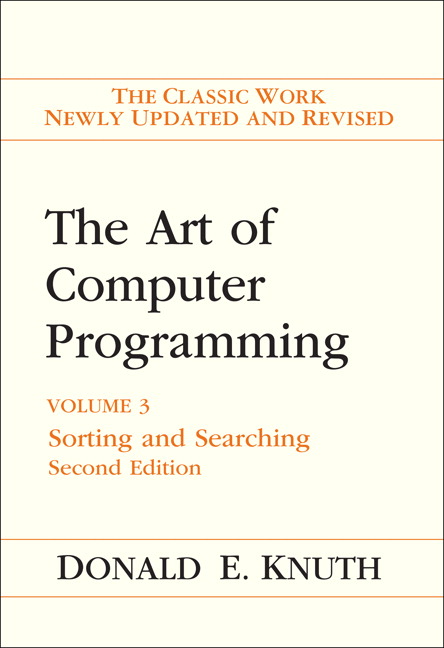Lab Week 11: Sorting
Overview
- Sorting
- Divide & Conquer Strategies
- Parallel Sorting
- Lab 05: Sorting
- Sorting Networks
Sorting
Sorting is a fundamental operation in computer science

Goal
Start with an unordered array
[5, 7, 2, 3, 5, 2, 8, 1, 1, 5]
and transform it into a sorted array
[1, 1, 2, 2, 3, 5, 5, 5, 7, 8]
Same elements in increasing order.
Simplistic Sorting Strategies
Selection Sort
- Find smallest element; put at index 1
- Find next smallest; put at index 2
- …
5 7 2 3
Insertion sort
- Iterate
j = 1, 2, ... - Insert
jth element in sorted order by pairwise swaps
5 7 2 3
Bubble sort
- Repeat until sorted:
- Iterate over array:
- Swap adjacent pairs if out of order
5 7 2 3
Questions
- Are any of these strategies efficient?
- Can they be parallelized easily?
- Are these algorithms practical?
Faster Sequential Algorithms: Divide and Conquer
Merge Sort
- Divide array in half
- Sort left half (recursively)
- Sort right half (recursively)
- Merge sorted halves
7 5 3 2
Randomized Quick Sort
- Pick random “pivot” element
- Put all smaller elements on left
- Put all larger elements on right
- Recursively sort left/right sides
5 4 7 9 2 8 3
Questions
- Are any of these strategies efficient?
- Can they be parallelized easily?
- Are these algorithms practical?
Quicksort in More Depth
- If we’re unlucky, it can be slow
- e.g., always pick smallest/largest element as pivot
- In practice it tends to be fast
- it is extremely unlikely that we are often unlucky
- Many built-in sorting procedures are variants of quicksort
Parallelizing Quicksort
Sequential:
- Select pivot
- Divide array
- left half smaller than pivot
- right half larger than pivot
Parallel:
- Sort left half
- Sort right half
Question
Why is parallelization potentially problematic?
Overcoming Imbalance
Creating more tasks is helpful?
- Smaller tasks completed faster
- Larger tasks broken down
Efficient, as long as no idle processes
- Thread pools are good for this!
- Need to ensure tasks performed in correct order
Implementation
Recall Fork-Join pools:
- thread pool with efficient support for forking:
- divide a task into two or more sub-tasks
- complete sub-tasks
- combine solutions (if necessary)
- tasks themselves spawn new sub-tasks
Creating FJ pool:
import java.util.concurrent.ForkJoinPool;
...
ForkJoinPool pool = new ForkJoinPool(POOL_SIZE);
...
pool.invoke(new SomeTask(...));
Recursive Actions
Tasks for fork-join pools (without return values)
- Extend
RecursiveAction - Override
compute()method
class MyTask extends RecursiveAction {
...
@Override
protected void compute () {
//... compute stuff ...//
MyTask sub1 = new MyTask(...) // create a sub-task
sub1.fork(); // start subtask
MyTask sub2 = new MyTask(...) // create another sub-task
sub2.fork(); // start other subtask
sub1.join(); // wait for sub1 to complete
sub2.join(); // wait for sub2 to complete
//... compute more stuff stuff ...//
}
}
Parallel Implementation of Quicksort
Basic task: Sort array between index i and j
Lab 05: Sorting (Optional)
Your task:
- Write a method that sorts a large array of
doubles as quickly as possible- large = > 1 million elements
- Should be faster than
Arrays.sort()
Lab 05 Demo
Suggestions
- Quicksort is a good starting point
- Use
ForkJoinPool - Use a reasonably large base case
-
Arrays.sort()as a sub-routine - it is quite fast for smaller arrays!
-
- Be careful about memory access pattern
- cache performance is crucial for large arrays
Sorting Networks
Insertion Sort, Revisited
for (int i = 1; i < data.length; ++i) {
for (int j = i; j > 0; --j) {
if (data[j-1] > data[j]) {
swap(data, j-1, j)
}
}
}
Comparators: Visualizing Swaps
if (data[i] > data[j]) {
swap(data, i, j)
}
Insertion Sort, Visualized
for (int i = 1; i < data.length; ++i) {
for (int j = i; j > 0; --j) {
if (data[j-1] > data[j]) {
swap(data, j-1, j)
}
}
}
Which Operations can be Parallelized?
Sorting In Parallel
How Fast is it?
Measuring Speed
depth = max # of comparators on any path from input to output
Bubble Sort, Revisited
for (int m = data.length - 1; m > 0; --m) {
for (int i = 0; i < m; ++i) {
if (data[i] > data[i+1]) {
swap(data, i, i+1)
}
}
}
Which Operations can be Parallelized?
Parallelized Version
Does it Look Familiar?
Huh
- Insertion sort and bubble sort perform precisely same operations
- only differ in the order in which comparisons are made
-
When fuly parallelized, both are same sorting network
- Parallel versions are reasonably efficient
- depth $\approx 2 n$
Optimal Sorting Network, $n = 4$
Current State
What is known:
- Optimal depth sorting networks for $n \leq 17$
What is not known:
- Optimal depth sorting networks for $n \geq 18$